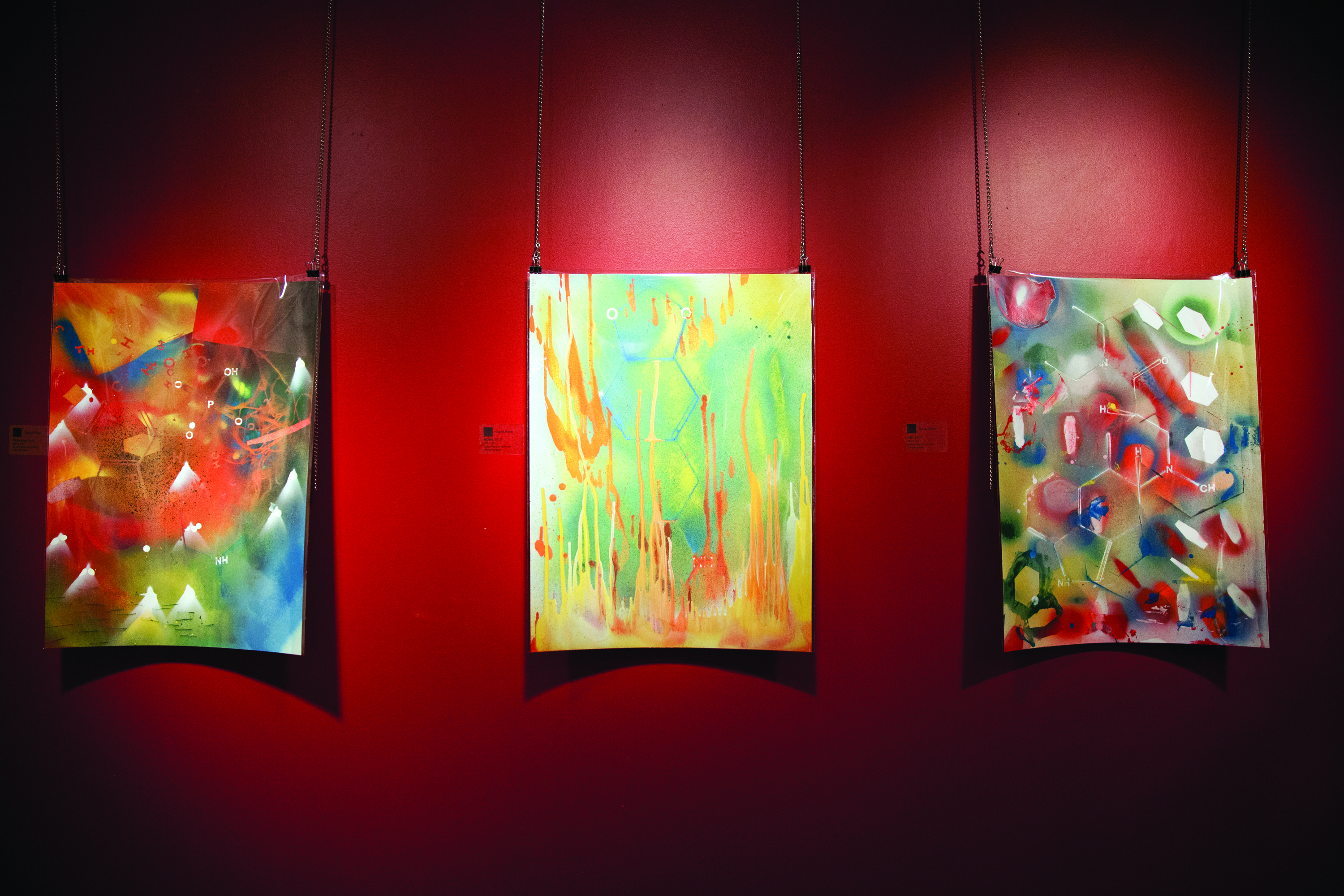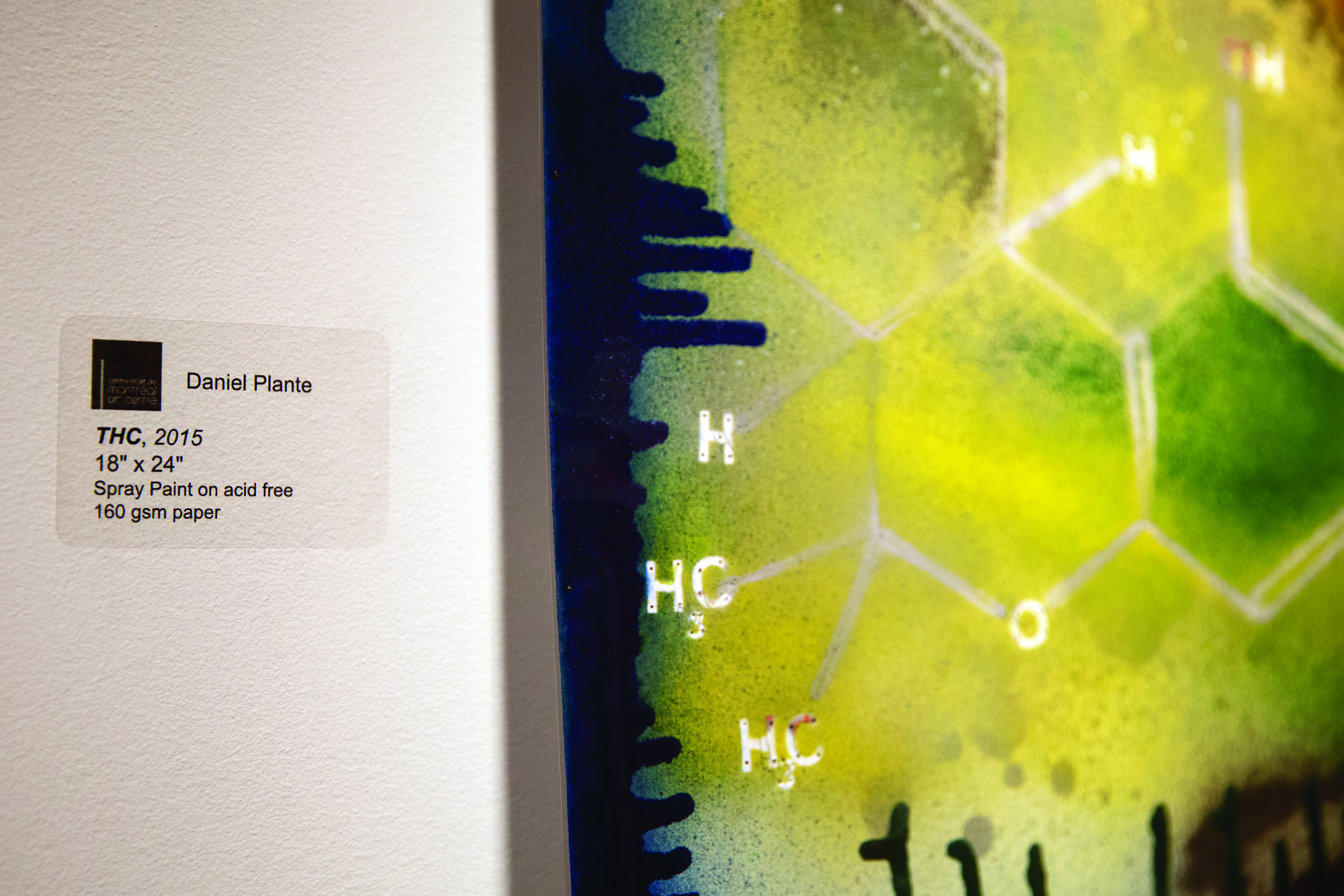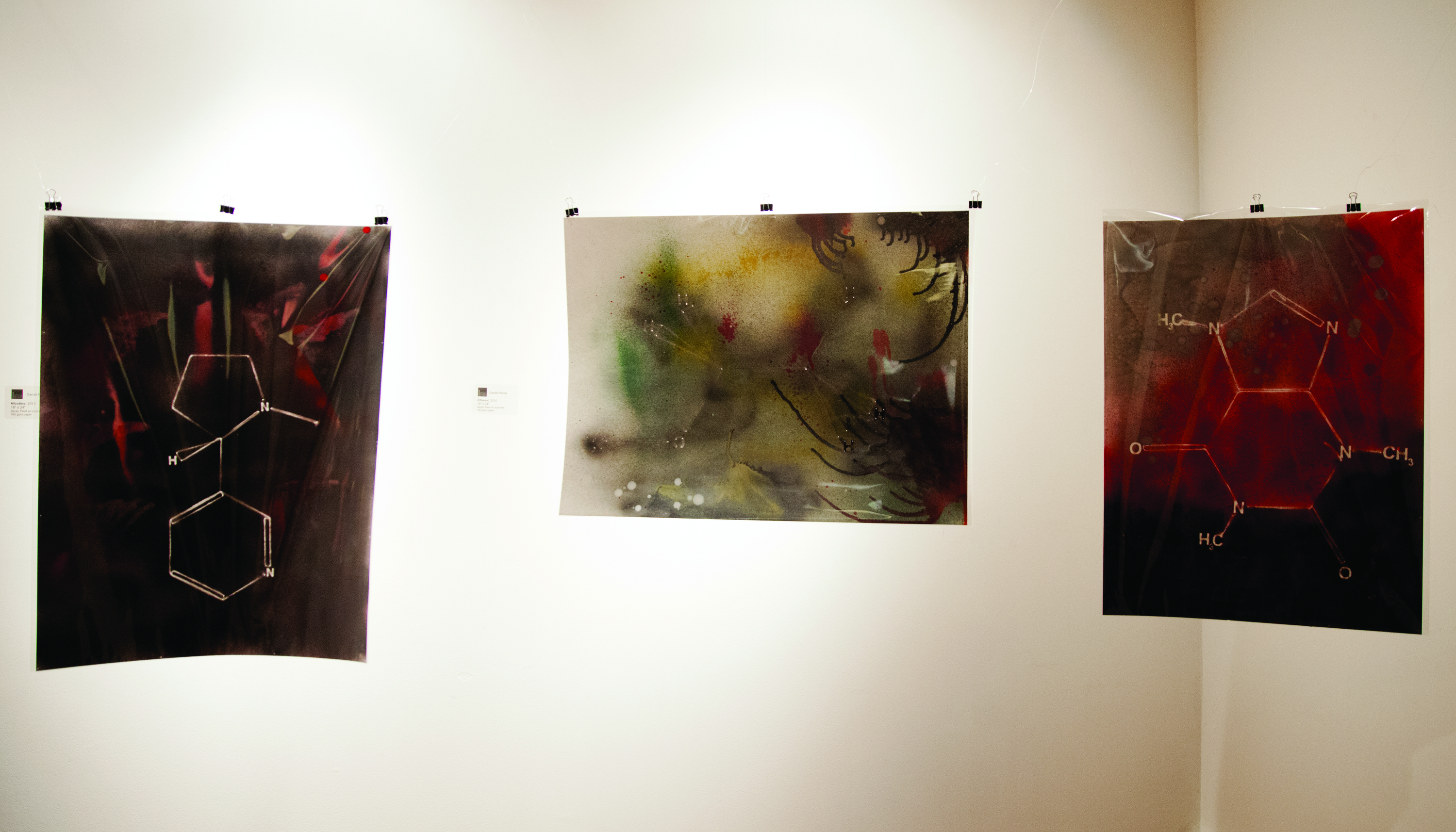Substances looks to translate experiences caused by psychoactive drugs into art
Twenty abstract spray paintings each representing a different psychoactive substance hang loosely by thin chains on the walls of a 19th-century building known as the Montreal Arts Centre. The scientific names and molecular structures of every drug imaginable—from caffeine to codeine—are featured as part of an exhibition called Substances.

Daniel Plante is the mastermind behind the exhibition, which he began brainstorming in October 2015. One month later, he delved deep into research and started reading tirelessly about these existing psychoactive substances, how they are made and the different ways in which they affect people.
“I read many recollections of people who have used certain substances and mixed it in with my own experiences,” said Plante.
The interrelation of science, art, emotion and experience is made clear in Plante’s works through his use of a multitude of colours, patterns and lines. At the centre of every painting is the biochemical makeup of the substance it portrays. Spray painted on top of these molecular sketches is a mishmash of colours representing Plante’s own interpretation of the substance in question.

Each painting was done with non-acidic spray paint on a 160 gsm—grams per square metre—paper. Plante applied upward-going drips to emphasize the stimulating effects of some substances and downward-going ones to emphasize the depressing effects of others, such as alcohol. Masking and stamping methods were also used to demonstrate the schematics of organic chemistry.
The colours and emotions poured into the paintings vary, considering that they differ from substance to substance. The painting that depicts cocaine, for instance, is black with short staccato lines of fluorescent red resembling open cuts on skin. To many it gives off a very melancholic and angry vibe. This, however, is Plante’s interpretation of someone else’s experience of the substance. At the other end of the spectrum, the rainbow-like appeal of his LSD portrayal, stamped with white blotches of paint coming across as spotlights, brings a sense of whimsy and nonchalance to the exhibition.

“Reality just is and you experience it in one way or another,” said Plante while discussing the experiences that these many substances have produced for him.
Plante hopes to make onlookers realize that we are all fundamentally biochemical beings who have different perceptions of the objects and people we see in front of us. According to him, most of our experiences are highly influenced by psychoactive substances. Coffee is a common example of a substance people use as a stimulant to go about their everyday lives without feeling fatigued.
“People complimented me and said it was beautiful,” said Plante. “Beauty is good but it’s only one aspect of the exhibition. Meaning is another aspect and when beauty and meaning go hand in hand that’s when I’ve accomplished something.”
Plante’s love of spray painting began after he graduated from ÉTS in mechanical engineering and would use copies of his brother’s CV to spray paint on.
He now develops products and is a co-founder of Artrasta, an annual live painting event that was first held in October 2015.
Don’t worry, you still have time to see Substances—the exhibition runs until April 8 at the Montreal Arts Centre.



